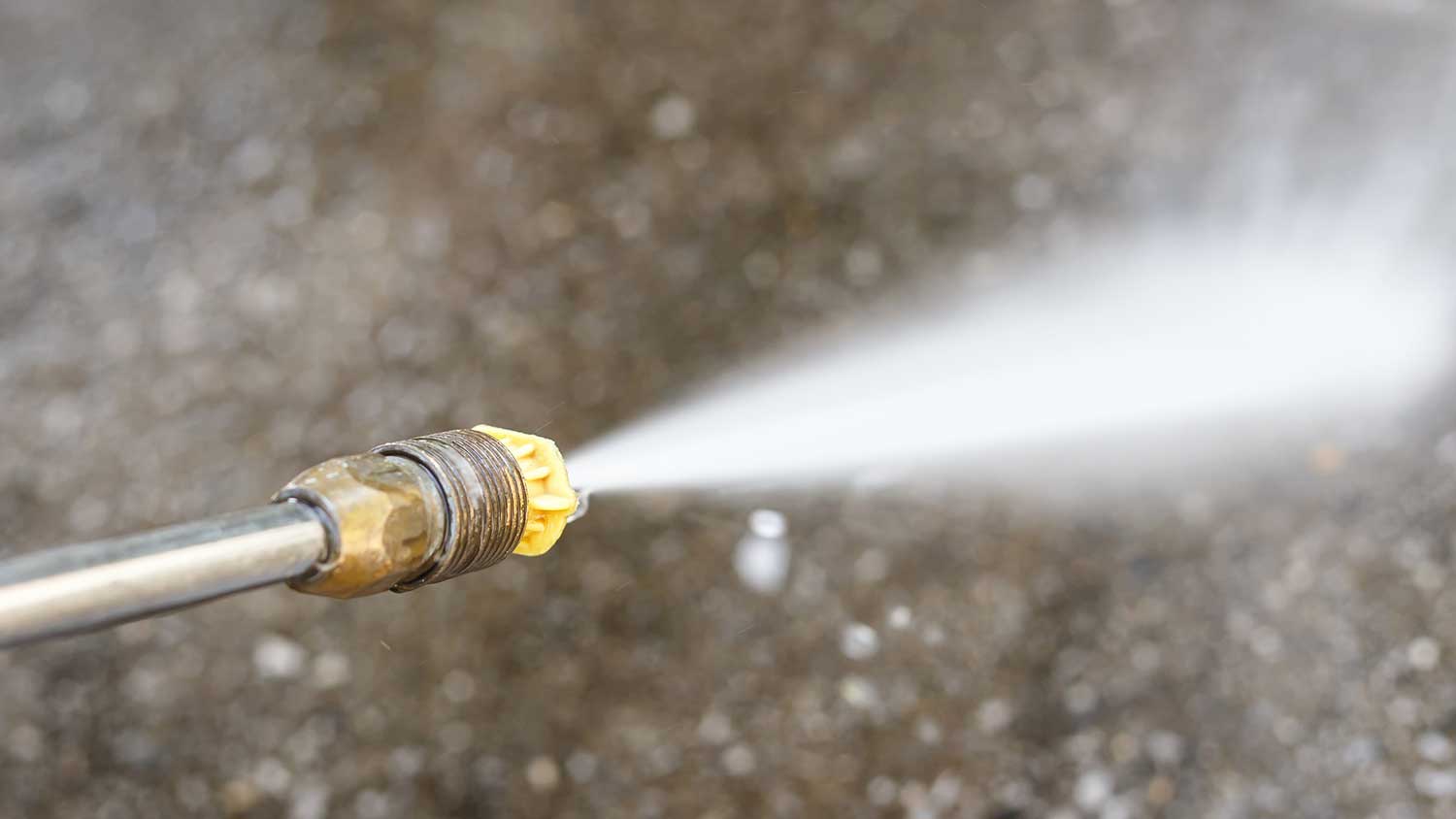Your Guide to Power Washer and Pressure Washer Nozzles
Choosing the right pressure washer tip is vital for your cleaning project


Nozzles range from zero to 65 degrees, offering varying water pressure.
They’re color-coded by the degree of the spray pattern.
Smaller degrees create slender streams and higher pressure.
Specialty attachments help complete unique projects faster.
Using the right nozzle is essential to prevent damage and bodily harm
Pressure washers can have a variety of tips and attachments, each one suitable for different surfaces and types of messes. If you’re new to pressure washing, knowing which nozzle is best for your project can be difficult. Using the wrong spray tip is one of the most common pressure washing mistakes. At best, it won’t get the job done or, at worst, it will damage your property beyond repair. Learn more about the different pressure washer nozzle types so you can find the right one for your next project.
Standard Pressure Washer Nozzle Types

Most power washers come with a set of color-coded nozzles in varying degrees. The degree refers to the spray pattern, which lets you know the spray's width and the water pressure's strength. The smaller the degree, the thinner the stream, and the higher the pressure. Let’s look at the five basic pressure washer nozzle types and when to use each one.

Red: Zero Degrees
A zero-degree spray tip offers the slimmest stream and highest water pressure of any nozzle. Because of this, most homeowners will rarely use the red tip. It’s best for cleaning small areas of encrusted dirt or rust off hard surfaces like concrete and metal. You may also use this nozzle for narrow, hard-to-reach spots, like cracks between patio pavers. However, you should never use the red tip when cleaning soft surfaces like wood, siding, or cars, as the intense pressure can remove coatings and damage the surfaces.
Yellow: 15 Degrees
Yellow nozzles produce a 15-degree spray pattern. The stream is still powerful, but it covers a wider surface area than the zero-degree tip. This makes it ideal for heavy-duty power washing, like removing stains from garage floors or driveways. You can also use the 15-degree tip to prepare surfaces for painting. But if you’re still learning how to use a pressure washer, you must be careful—the nozzle’s high pressure can easily damage paint and wood.
Green: 25 Degrees
The 25-degree nozzle is likely the tip you’ll use most often around your home. The green tip is perfect for cleaning siding, driveways, walkways, and even patio furniture. Though the pressure is lower, it can still harm wood and other soft surfaces if you’re not careful. To be safe, use this nozzle for cleaning larger areas with hard surfaces.
White: 40 Degrees
The 40-degree spray tip covers ample surface area at a lower pressure. This makes the white nozzle perfect for washing softer surfaces without damaging them. You should use this tip when cleaning siding, wood, composite materials, and your vehicle's tires.
Black: 65 Degrees
These nozzles provide the widest and gentlest spray pattern of all the standard tips. They’re often used with soap dispensers to apply detergent. Because of the low water pressure, black 65-degree nozzles are the best choice when you need to clean delicate surfaces. You should use this nozzle when rinsing windows, other glass surfaces, ceramics, and vehicles.
Specialty Power Washer Nozzle Types
There are also a variety of specialty attachments for pressure washers that produce unique spray patterns or serve specific functions. Here are a few of the most common ones and what they’re best used for.
Surface cleaners: distribute water over a larger surface area; ideal for cleaning flat surfaces like decks and driveways quickly and consistently.
Hoses and wands: lengthen the reach of pressure washers; ideal for cleaning gutters and other high-up or hard-to-reach areas.
Turbo nozzles: rotates a zero-degree jet of water to provide coverage similar to a 25-degree tip; ideal for tough messes on large, hard surfaces.
Adjustable nozzles: one nozzle with multiple revolving tips, allowing users to quickly change between spray patterns; ideal for saving time when cleaning multiple types of surfaces in one session.
Soap nozzles: foam cannons and spray guns help distribute soap and detergent on surfaces for deeper cleaning; ideal for cars and boats, though they can be useful on any surface.
Brushes: brush away dirt and grime, often rotating for easier cleaning; ideal for patio furniture, cars, and other delicate surfaces.
Brooms: similar to a combination of surface cleaners and brushes, distribute water in a wide surface area; ideal for cleaning surfaces quickly and removing debris.
How to Choose the Right Pressure Washer Nozzle
Before you begin pressure washing any area, it’s crucial to select the right nozzle for the job. Start by assessing the surface material and severity of the mess. This will give you a better idea of which tip to use to complete the project safely and without damaging the surface.
If you’re having trouble deciding, start with a wider-angle nozzle and test a small area. Keep your distance when power washing and slowly move closer as needed. If the area is proving to be particularly stubborn, you can switch to a nozzle with higher pressure. To get a professional clean and avoid damaging your property, hire a local power washing service.















